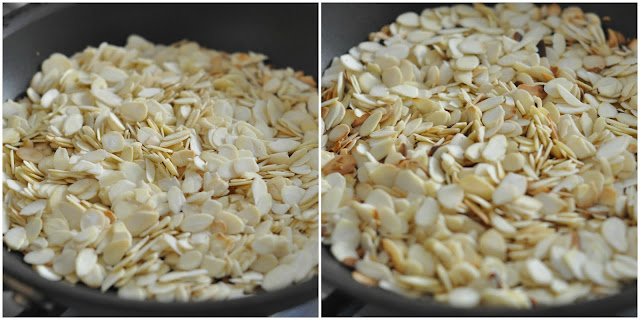* * * * *
So, I've been on my Advocare journey (more about what Advocare is at the end of this post) for 14 or so weeks now (I say journey because I don't see it ever ending).
Here I was post baby no. 2 (October 1, 2012 - he was 6 months - note: I gained the majority of my weight after baby. Yay!) at around 180# and 25.5% body fat. I was drinking a bottle of wine a day (no joke, I had it with breakfast - that's what they do on RHONJ, right?) and as it turns out, that was adding up to a whole lotta calories. I woke up one day and decided this is not cool. I was sick of my thighs rubbing together and this bat wing thing happening on my arms - I had no energy and even less self-confidence.
So, by complete kismet, I found my now dear, dear friend Danielle and long story short, started Advocare right away. And here I am now (January 23, 2013) at 159# somewhere around 18% body fat. Update: As of March 17, 2013 I am at 155# and 15% body fat and I have triceps and calves for the first time in as long as I can remember.
I followed Honey We're Healthy and was so inspired by Megan. She works, has an adorable little boy, a house that's to die forand was still able to live a healthy life style. I figured if she could do it, so could I. I followed Megan's lead and started (and finished!)Jamie Eason's 12-week LiveFit program and LOVED it, but then read Jenna's story and decided to take the plunge and start CrossFit. Advocare also has a killer DVD with 24 minute workouts. It's great for super busy people who can't necessarily commit to the gym everyday, but still want to get fit. CrossFit and Advocare have taught me so much. I know it sounds silly, but I am a better mother, wife, friend and person because of them. I've gained so much confidence (and energy!).
What is Advocare, you ask? It is so many things to me, but basically, it's a comprehensive line of nutritionally advanced supplements that SUPPLEMENT your diet and exercise program(s). It's not magic in a pill, it's elite nutrition and really, it's notjust supplements, it's a lifestyle. A lifestyle I wanted, but didn't know where to start. I was in a place where I think a lot of people are "I want to get healthy but don't know how. Just show/tell me what to do and I'll do it". Advocare also has a TON of big name, unpaid endorsers and a solution for everyone, be it a stay-at-home mom or an NFL player.
Advocare has taught me that nothing worth having comes easy and it doesn't happen overnight. It gave me the support and motivation to keep going when the going got tough (and believe me, it did) and just take it day by day.
The 24-Day Challenge is the core of the line and it's meant to kickstart your weight loss or break through plateaus. You can read more about that here. And although weight loss is often a result, the whole goal of the Challenge, and all of Advocare really, is health and nutrition.
So, here's what my day looks like - I'm still nursing baby no. 2 so, I have to do a modified routine. I think it's taken me longer to get results than most people, but I am just thankful that these particular Advocare products are safe for pregnant/breastfeeding mom's. Pretty awesome.
Supplements:
SPARK (oh how I love thee)
Catalyst (I HIGHLY recommend if it's tone/definition you're after)
Post-Workout Recovery (like a little treat. SO good)
Rehydrate (only if I have a super hard/long workout)
And here's what my usual daily diet looks like. I don't advocate cutting out any food groups (Atkins-type 'diets') but, I will say that I have cut out gluten (about 98% of the time) and diary (with the exception of the whey protein in some of my Advocare products) and have never felt better.
Diet:
Upon waking:
Spark + Catalyst + OmegaPlex
30 - 45 minutes later:
Meal Replacement Shake (on workout days) OR scrambled egg whites with avocado and sriracha and (2) slices of Udi's Whole Grain Gluten Free Bread toasted
After workout:
Post Workout Recovery Shake
Mid-morning snack (on off days):
Apple with handful of almonds OR banana with almond butter OR Tuna Salad
Lunch:
I hold the dairy products and add avocado and sriracha (hmmm...I'm seeing a trend here)
I also use a TON of Megan's recipes. This is one of my absolute favorites right now.
Mid-afternoon snack:
Spark
Dinner:
Here's where it gets tricky. My husband is a meat and potatoes kind of guy so, I've had to figure out meals that will please us both. I've got some tricks up my sleeve (I've managed to go gluten free without him knowing...)
Again, I use a lot of Megan's recipes and I have a lot pinned to my Clean Eating board that I pull from.
I basically follow the equation (? is that what you call it? It's been a long time since algebra)
Protein + Vegetable + Complex Carb
Before Bed:
Muscle Gain + CorePlex + OmegaPlex
I won't go on and on about every dish or ingredient but please email me if you'd like me to send you a list.
It's easy once you get into a routine. I think that's one of the many benefits of the 24-Day Challenge, it's short enough that it doesn't overwhelm you but, long enough to get results, break bad habits and build a new routine.
I have learned that it's so important to set goals for yourself and BE PATIENT! It won't happen overnight, but I promise if you stick to it - it will happen.
Healthy living is only sustainable when you are intentional about it. It also really helps to have a support system and/or accountability partner. All of this has really helped me 're-calibrate'. I no longer consume an entire bottle of wine, a glass is almost too much. I now eat to perform. I eat what makes me feel good. I eat for nutrition.
That's not to say I don't have my splurges, I do - I actually think that allowing yourself that actually helps you stay on track and in it for the long haul.
I truly hope that my journey inspires you in some way to start your own if you haven't already. If I can do this with two wild boys (2.5 and 10 months), you can do it too...promise :)
Please feel free to comment or contact me with any questions! I'd love to help you with your health and fitness goals too :) If I can do it, you can do it! It's all about doing something you never thought you possibly could.

.JPG)











































